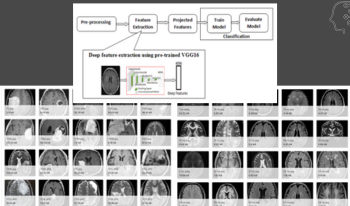
Brain tumor detection is a critical component of medical diagnostics, aiming to provide accurate, timely identification of tumor presence. This study utilizes a Convolutional Neural Network (CNN) approach with the VGG-16 model architecture to classify brain MRI images as either showing the presence of a tumor or not. Leveraging transfer learning, VGG-16 was fine-tuned for binary classification on a dataset of brain MRI images. This approach achieved validation and test accuracies of approximately 88% and 80%, respectively. Our methodology combines image preprocessing techniques with data augmentation to enhance model robustness on limited datasets. The results demonstrate the potential of CNN-based deep learning models in automated medical imaging and suggest future improvements through dataset expansion and model fine-tuning.

Deep learning (DL)-based algorithms are used in many integral modules of ADAS and Automated Driving Systems. Camera based perception, Driver Monitoring, Driving Policy, Radar and Lidar perception are few of the examples built using DL algorithms in such systems. These real-time DL applications requires huge compute requires up to 250 TOPs to realize them on an edge device. To meet the needs of such SoCs efficiently in-terms of Cost and Power silicon vendor provide a complex SoC with multiple DL engines. These SoCs also comes with all the system resources like L2/L3 on-chip memory, high speed DDR interface, PMIC etc to feed the data and power to utilize these DL engines compute efficiently. These system resource would scale linearly with number of DL engines in the system. This paper proposes solutions to optimizes these system resource to provide cost and Power efficient solution. (1) Co-operative and Adaptive asynchronous DL engines scheduling to optimize the peak resources usage in multiple vectors like memory size, throughput, Power/ Current. (2) Orchestration of Co-operative and Adaptive Multi-core DL Engines to achieve synchronous execution to achieve maximum utilization of all the resources. The proposed solution achieves upto 30% power saving or reducing overhead by 75% in 4 core configuration consisting of 32 TOPS.

Attackers may manipulate audio with the intent of presenting falsified reports, changing an opinion of a public figure, and winning influence and power. The prevalence of inauthentic multimedia continues to rise, so it is imperative to develop a set of tools that determines the legitimacy of media. We present a method that analyzes audio signals to determine whether they contain real human voices or fake human voices (i.e., voices generated by neural acoustic and waveform models). Instead of analyzing the audio signals directly, the proposed approach converts the audio signals into spectrogram images displaying frequency, intensity, and temporal content and evaluates them with a Convolutional Neural Network (CNN). Trained on both genuine human voice signals and synthesized voice signals, we show our approach achieves high accuracy on this classification task.